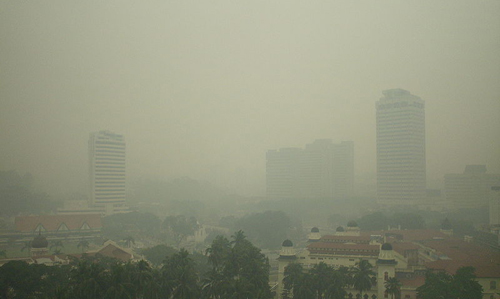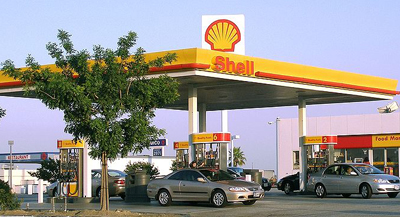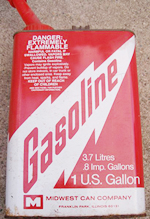Air Pollution
The first way that humans impact the atmosphere that you will learn about is air pollution. What color did you make the sky when you drew pictures as a kid? You could have colored it any color you wanted to, but most of the time, blue seems to be the first color choice. For most of us, especially in the U.S., blue skies are what we typically see.
But imagine not being able to see the sky because of all the smoke, haze, dust, and other stuff in the air. Air pollution is the presence of substances in the air that are in high enough concentrations to harm organisms, ecosystems, or materials. It can be deadly to living things, including humans. The World Health Organization states that 2.4 million people die every year from causes directly attributable to air pollution.
There are many substances in air that can be classified as pollutants. Air pollutants are categorized as either primary pollutants or secondary pollutants. Primary pollutants are those that are directly emitted from a source or a process, such as carbon dioxide coming out of the tailpipe of a car. Click through the tabs below to learn more about primary air pollutants.
Sulfur Dioxide

This is a structural representation of sulfur dioxide, a major primary air pollutant. It is emitted from the combustion of oil and coal, since these substances contain natural sulfur. It is also emitted from volcanoes and some industrial processes. It is a colorless gas with an irritating odor. It can turn to sulfuric acid in the atmosphere and return to Earth as a harmful irritating substance called acid rain.
Nitrogen Dioxide

This is nitrogen dioxide, also a major primary air pollutant. It is emitted from coal plants and automobiles. It can form a reddish-brown haze layer over the sky and forms nitric acid in the atmosphere, another contributor to acid rain.
Particulates

Particulates are tiny particles of solid or liquid suspended in the air. They reduce visibility and can become trapped in our lungs, causing lung failure, lung cancer, and even death. Some particulates come from natural events like volcanoes, dust storms, or forest fires. Others come from human activities like fossil fuel burning and industrial processes. Particles less than 2.5 micrometers in diameter are called PM2.5. Those between 2.5 and 10 micrometers are called PM10.
Carbon Monoxide

This is carbon monoxide, a colorless, tasteless, odorless, yet highly toxic gas. It is often emitted from the incomplete combustion of oil or gas. It commonly comes from motor vehicles. Exposure to carbon monoxide in high enough concentrations can lead to death.
Carbon Dioxide

Carbon dioxide is emitted by the combustion of fossil fuels. It is the big contributor to global warming, a phenomena associated with a gradual warming of the earth due to the way that increased carbon dioxide levels in the atmosphere trap heat. You will learn more about global warming later in this section.
Toxic Metals

Toxic metals are also primary air pollutants. Lead, mercury, cadmium, and copper are the main ones. These metals come from the combustion of fossil fuels and from industrial processes. Lead was once a major component of motor vehicle emissions because it was a widely used gasoline additive, put into gasoline to help prevent engine knocking. But government regulations in the 1970s have lead to great reductions in the use of lead in gasoline. New cars now require "unleaded" gasoline. Toxic metals harm living things by accumulating in their bodies and interfering with normal life functions.
Volatile Organic Compounds

Volatile organic compounds (VOCs) are organic compounds that exist as gases in the air. They come from landfills, tobacco smoke, fossil fuel combustion, and materials like paint, gasoline, dry cleaning solvents, and paint thinners. These substances cause cancer, blood disorders and immune system damage.
Chlorofluorocarbons

Chlorofluorocarbons (CFCs) are also primary air pollutants. They destroy Earth’s protective ozone layer, the part of the stratosphere that protects the earth from excessive solar radiation. CFCs were once widely used in refrigerants and spray cans but are now banned from use.